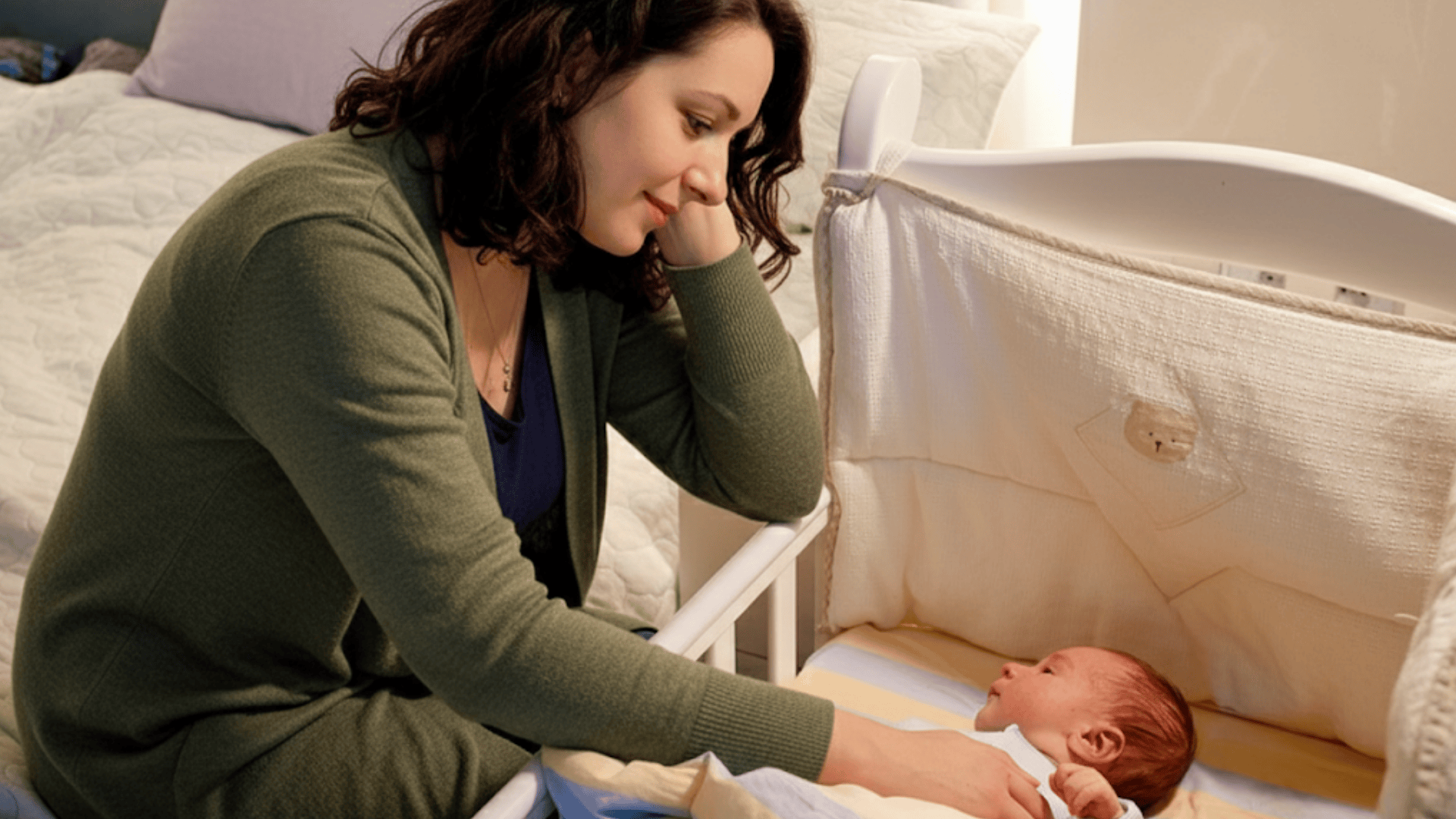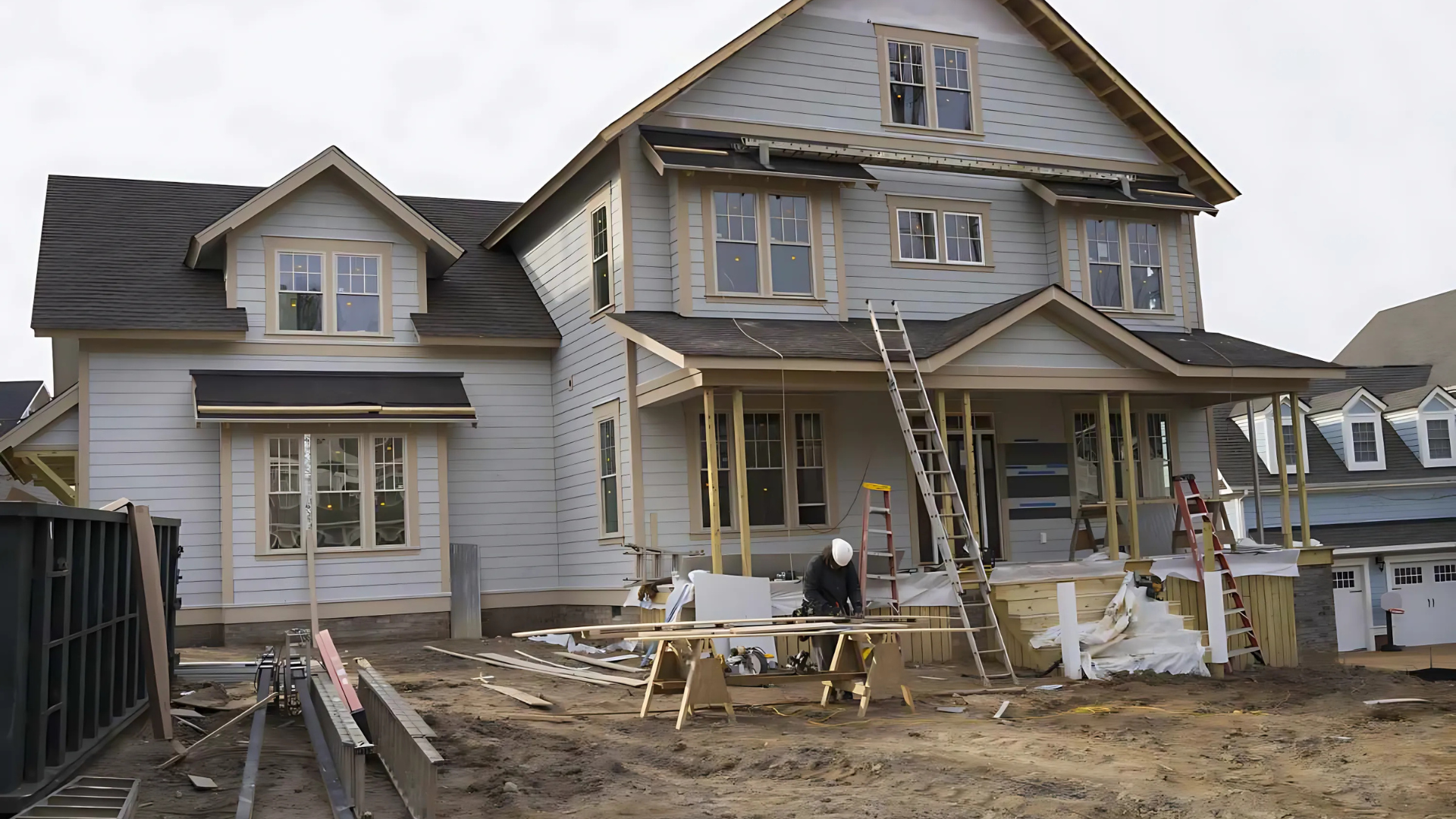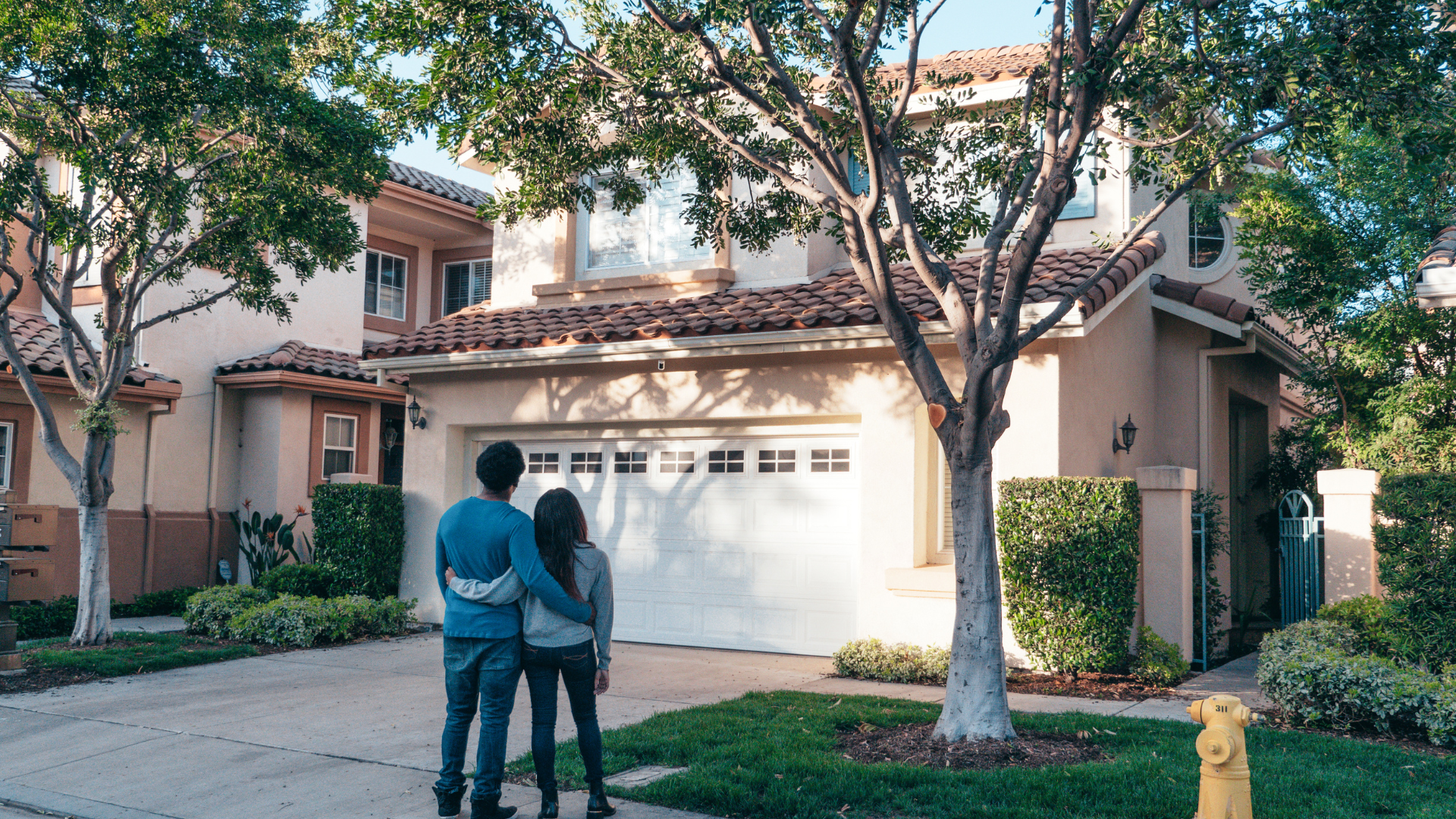If your baby has a stuffy nose, I know how hard bedtime can be.
You’re probably listening to every breath, worried if they’re sleeping safely, and wishing you could clear the congestion for them.
The truth is, even though a blocked nose is usually not serious, it can make sleep uncomfortable for both you and your little one. That’s why it helps to know what’s safe and what’s not.
In this blog, you’ll learn the best sleeping position for a baby with a stuffy nose, simple comfort practices that actually work, things to avoid, and signs that mean it’s time to call your doctor.
Understanding Baby Nasal Congestion
It’s common for babies to get a stuffy nose, and while it usually isn’t serious, it can make sleep uncomfortable. Because babies have such small nasal passages, even a little mucus or swelling can make it harder for them to breathe.
Unlike older kids or adults, they can’t just blow their nose, so they rely on you to help ease the blockage.
Babies mostly breathe through their noses, especially while sleeping. Since their passages are so narrow, any swelling or mucus makes breathing more difficult.
Common Causes:
- Colds and mild infections.
- Allergies to dust, pollen, or pet dander.
- Dry indoor air, especially in winter.
Signs of a Stuffy Nose:
- Noisy or blocked breathing.
- Trouble feeding, as they can’t breathe well while nursing or bottle-feeding.
- Restless sleep or frequent waking
Knowing the causes and signs of congestion helps you respond quickly and keep your baby more comfortable. The next step is understanding how to manage sleep safely when their nose is blocked.
Best Sleeping Position for Baby with a Stuffy Nose: Back Sleeping
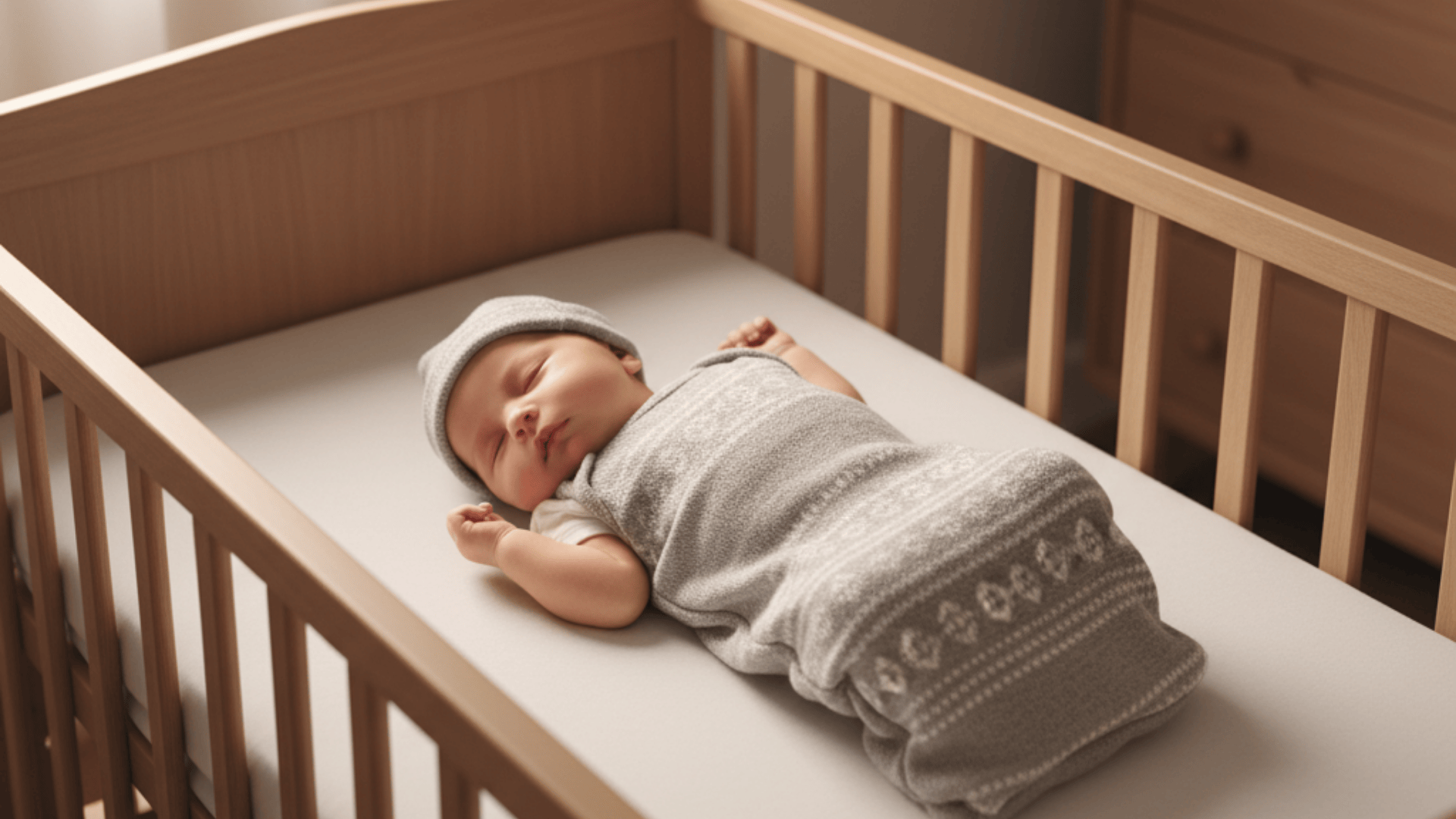
When your baby has a stuffy nose, it’s natural to wonder how they should sleep. Not all positions are safe, and some can make breathing even harder.
Back sleeping is the safest and most recommended position for babies, even when they’re congested. It helps keep your baby’s airway open, allowing them to breathe more easily throughout the night.
This position also greatly lowers the risk of sudden infant death syndrome (SIDS), which is why pediatric experts, including the American Academy of Pediatrics, strongly recommend it for all naps and nighttime sleep.
When your baby sleeps on their back, gravity helps keep mucus from pooling in the throat, reducing the chance of choking or blocked breathing.
You might still hear some sniffling or noisy breathing, but that’s normal and not a sign of danger.
Rest assured- back sleeping is both the safest and most comfortable position for a baby with a stuffy nose.
Sleeping Positions to Avoid for a Congested Baby
It’s easy to think certain sleep positions might help your baby breathe better, but not all are safe. Some can actually exacerbate congestion and breathing problems.
1. Side Sleeping
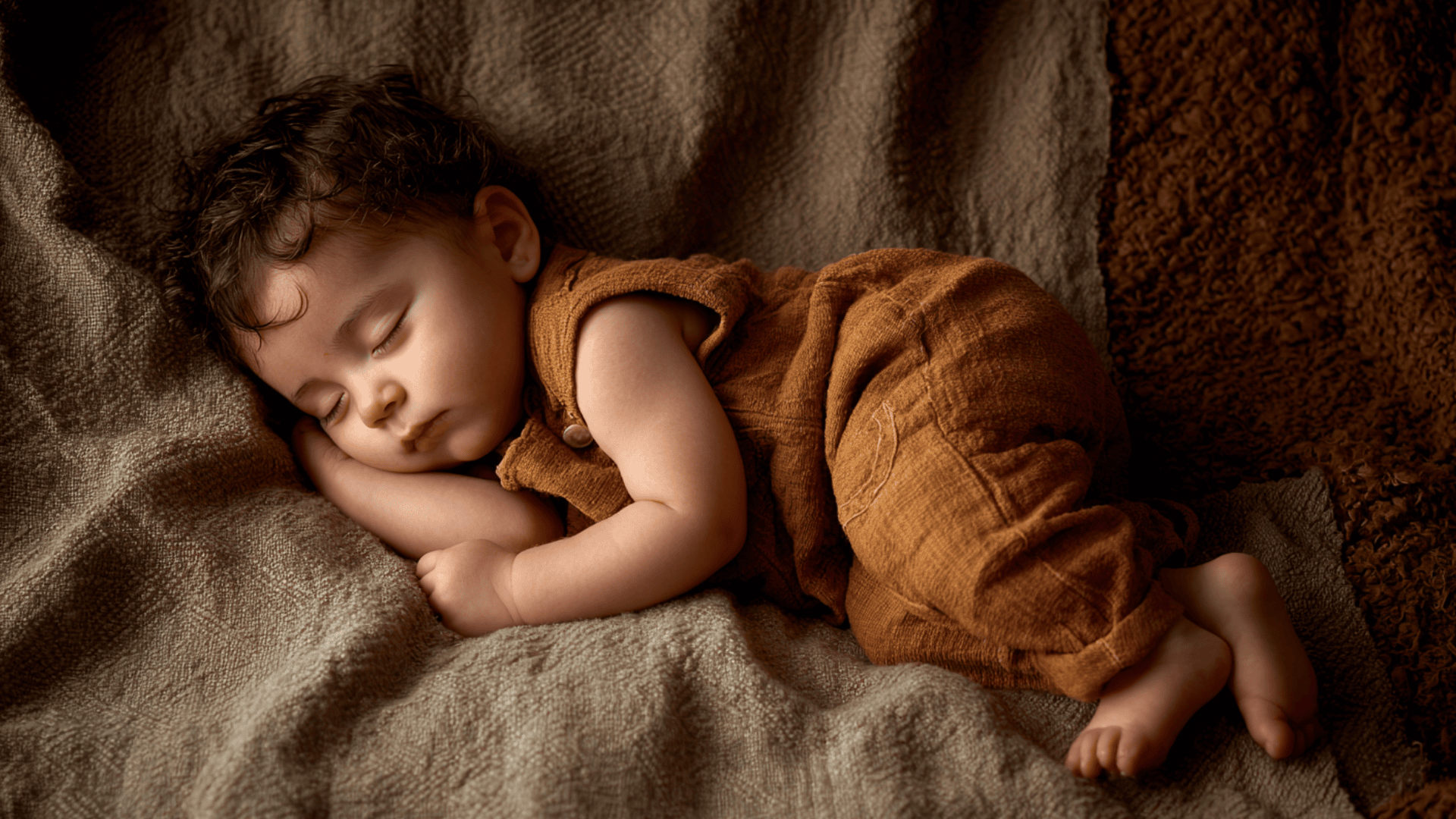
Side sleeping is not recommended for babies. When placed on their side, babies can quickly roll onto their stomach, increasing the risk of airway blockage. This position makes breathing harder and raises the risk of SIDS.
Pediatric experts advise against side sleeping altogether, as it offers no safety or comfort benefits compared to sleeping on one’s back.
2. Stomach Sleeping
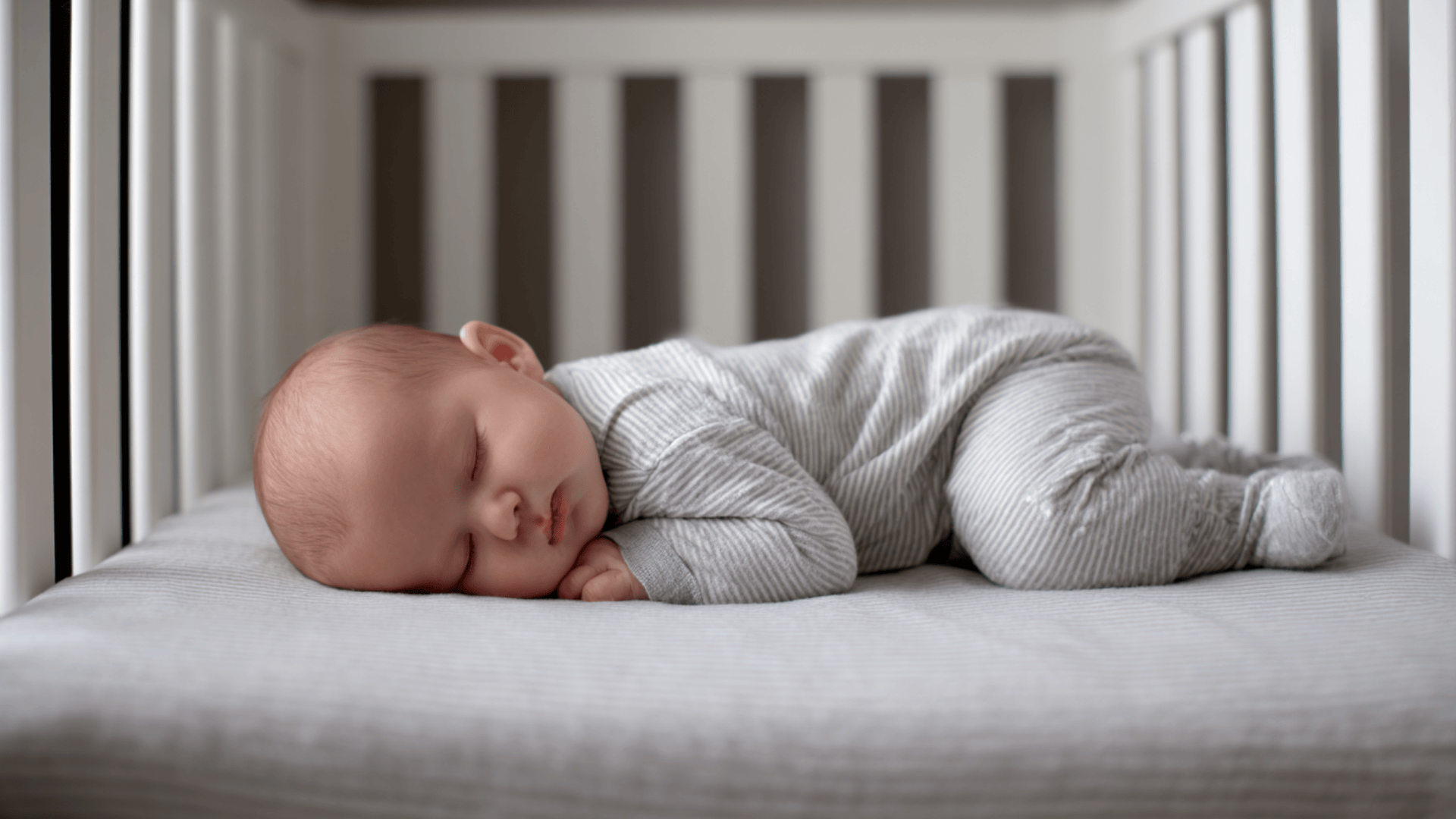
Stomach sleeping is one of the riskiest positions for infants. Babies lying on their tummies face a higher chance of suffocation and SIDS.
For a congested baby, this position makes breathing even more difficult because their nose is already blocked.
Even during short naps, stomach sleeping should be avoided, as it puts your baby in a potentially dangerous position.
3. Inclined Sleepers, Pillows, or Wedges

Inclined sleepers and sleep aids like pillows or wedges may seem helpful when your baby has a stuffy nose, but they are not safe.
These products can cause your baby to slide or roll into positions where their face presses against fabric, increasing the risk of suffocation.
The American Academy of Pediatrics does not approve these items for infant sleep. A firm, flat surface without extras is always the best choice.
Knowing which positions to avoid helps you keep your baby safe and comfortable through the night. Sticking to back sleeping is always the best and safest choice.
Practices to Help Baby Sleep More Comfortably
A stuffy nose can make sleep harder, but there are safe ways to help your baby rest. These practices can ease congestion without adding risks.
- Using a humidifier: Dry air can worsen congestion. A cool-mist humidifier keeps nasal passages moist and makes breathing easier. Place it across the room and clean it often to prevent mold or bacteria.
- Saline drops and bulb syringe: Saline drops thin the mucus so it can be removed. After applying drops, gently suction the nose with a bulb syringe or nasal aspirator. Limit suctioning to when it’s needed to avoid irritation.
- Proper room conditions: A cool, well-ventilated room supports better sleep. Dress your baby in breathable sleepwear or a sleep sack. Avoid loose blankets, pillows, or soft bedding in the crib.
- Steamy bathroom trick: Sit with your baby in a steamy bathroom for a few minutes before bed. The warm mist loosens mucus and clears the nose. Do not place your baby in the shower; just sitting in the room is enough.
- Keeping baby upright after feeding: Hold your baby upright for 15–20 minutes after feeding before laying them down. This reduces spit-up and helps prevent congestion from worsening right after eating.
These steps don’t cure a stuffy nose, but they can make it easier for your baby to breathe and sleep safely.
What NOT to Do with a Congested Baby
When your baby has a stuffy nose, some things may seem helpful but aren’t safe. Here’s what to avoid:
Over-the-Counter Medications
Avoid giving cold or congestion medicines to your baby unless prescribed by a pediatrician. Most over-the-counter products are not safe for infants and can cause harmful side effects.
Instead, use simple remedies like saline drops, a bulb syringe, or a cool-mist humidifier to ease mild congestion safely.
Extra Bedding or Stuffed Toys
Keep your baby’s sleep area clear and simple. Blankets, pillows, and stuffed animals increase the risk of suffocation and should never be placed in the crib.
A fitted sheet on a firm mattress is all your baby needs. Dress them in a sleep sack or wearable blanket to stay warm without loose items
When to Call the Doctor
Most cases of baby congestion are mild, but some signs need medical attention. Call your pediatrician if you notice:
- Breathing difficulties or wheezing: Fast breathing, flared nostrils, or a pulling sensation in the chest with each breath are warning signs.
- Refusal to feed: If your baby can’t nurse or take a bottle due to congestion, they may risk dehydration and require assistance clearing their airway.
- Fever or other symptoms: A fever, persistent cough, or unusual fussiness may indicate an infection that requires treatment.
These safety steps and warning signs provide a clear guide on when to trust your instincts and when to seek medical attention for your baby’s stuffy nose. Stay focused on safe sleep, and call your doctor anytime you feel unsure.
After Illness Tips for Your Baby
Once your baby starts feeling better, it’s important to gently guide them back into their normal routine. Illness can disrupt sleep, feeding, and daily comfort, so a little extra care helps them adjust smoothly:
- Ease back into routine: Return to regular sleep and feeding schedules gradually. Don’t worry if your baby needs a bit more comfort at first.
- Offer extra fluids: If your baby is old enough for water, keep them hydrated. For infants, continue breastfeeding or formula feeding as usual.
- Focus on rest: Even after symptoms improve, babies may still feel tired. Stick to naps and bedtime to help them fully recover.
- Watch for lingering symptoms: If congestion, cough, or fussiness persists, contact your pediatrician to rule out any more serious issues.
- Gentle play and tummy time: Slowly reintroduce tummy time and light play to rebuild strength, but avoid pushing if your baby still appears tired.
- Parent reassurance: It’s normal for babies to cling more after being sick. Extra cuddles and comfort can help them feel secure as they return to their routine.
Getting back to normal takes time, and every baby recovers at their own pace. With patience, safe sleep, and a steady routine, your little one will settle in again soon.
Conclusion
Caring for a baby with a stuffy nose can feel overwhelming, but you now know the safest steps to take.
You’ve learned why congestion happens, the best sleeping position for a baby with a stuffy nose, safe comfort practices, what to avoid, and when to call the doctor.
By keeping your little one on their back, using simple tools like a humidifier or saline drops, and monitoring for warning signs, you can help them breathe more easily and sleep safely.
At the end of the day, I want you to feel confident that small, safe changes can make a significant difference in your baby’s comfort and rest!

